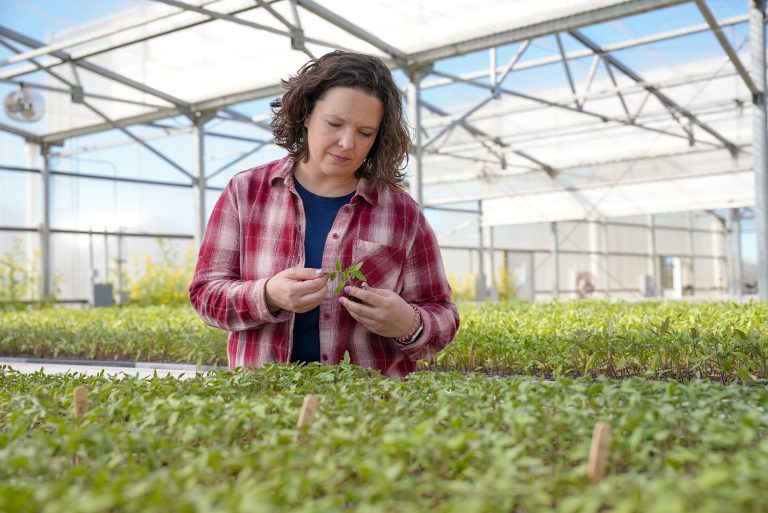
Jessica Chitwood-Brown is the new tomato breeder at the University of Florida Gulf Coast Research and Education Center (GCREC).
Chitwood-Brown coordinates the lab where she earned Ph.D. and conducted her post-doctoral research, in the northern end of Florida tomato country. She’s taken the position of her doctoral adviser, Sam Hutton, at the GCREC.
“I really admire Sam, so I have a lot to live up to,” Chitwood-Brown said. “But I have confidence I can continue to serve tomato growers in the strong tradition of my mentor.”
Jack Rechcigl, director of the GCREC, recalled the great research Chitwood-Brown did while a Ph.D. student and post-doc in Hutton’s lab. It was a big reason he interviewed her for the position.
“Jessica learned under a top-notch tomato breeder in Sam Hutton,” Rechcigl said. “We know she’ll continue developing tomatoes that meet the needs of our state’s growers, including varieties that resist pests and diseases. She’ll also work to breed tomatoes with fine flavor and aroma. We’re really excited to see where Jessica takes the tomato-breeding program.”
Research Focus
Chitwood-Brown wants to improve on the great work of her predecessors, including Hutton and Jay Scott. For instance, her stakeholders – from growers to consumers – may desire different traits in tomatoes.
Hutton released several tomato hybrids last year that were bred to be machine harvestable. These hybrids are currently available for licensing through Florida Foundation Seed Producers.
“This type of tomato has been of interest to the breeding program here for many years because growers have repeatedly expressed their challenge with labor,” Chitwood-Brown said.
Growers also need tomatoes that resist disease, live through climate change and produce high yields. Consumers need good shelf life and high quality, such as a nice, dark red color, no defects and a tomato that tastes good.
“Combining these traits requires the full art and science of plant breeding,” Chitwood-Brown said. “We use molecular tools to improve selection for traits like disease-resistance and high lycopene, and we evaluate many, many tomato lines each season to make selections, choose parents, make crosses, etc.”
Product Profiles
Among the many projects Chitwood-Brown is starting are product profiles. These profiles essentially break down a variety into its parts. They answer the question: What are the traits of a successful tomato variety? This information comes from the stakeholders and gets specific.
“For example, I ask growers to give me a range for how many bins of fruit (or boxes, if we are talking about pack-out) per acre would they find acceptable? What are they getting now? That kind of thing,” Chitwood-Brown said. “These are the basic traits — things a variety has to have to be considered at all.”
However, scientists like Chitwood-Brown know that a new product being as good as, or equal, to a product currently on the market isn’t good enough.
“You want to know what kind of traits would make someone replace a variety that they are currently growing,” she said. “In other words, what traits are missing? What do they want but don’t have? This is the power of a product profile. It helps align the objectives of the breeding program with the needs of the industry.”









